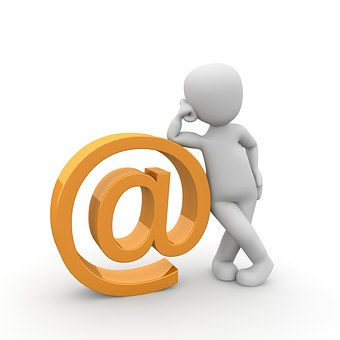Email Not Receiving
In the bustling digital age, where communication predominantly happens through electronic mail, encountering problems such as email not receiving or realizing you are not getting emails can throw a wrench in your personal or professional communications. These issues, though common, can create significant delays and potentially result in missed opportunities or unmet deadlines.
Whether you find yourself repeatedly saying, my email not receiving messages, or you find others notifying you about not getting emails you sent, it becomes imperative to find reliable solutions that address these concerns efficiently. Often, the culprits behind the email not getting issues can range from server problems to incorrect settings, creating a cascade of communication barriers that leave you not getting emails as expected.
In this guide, we seek to explore the underlying causes of these prevalent issues, offering actionable solutions and preventative tips to restore your email functionality to its optimal state. By the end of this discourse, we aim to equip you with the knowledge and strategies to tackle email not-receiving issues head-on, fostering a seamless and uninterrupted email communication flow.
Stay with us as we delve deeper into this subject, navigating through the challenges and emerging victorious against the frustrating phenomena of not receiving emails.
Why Email Not Receiving Emails:
In the digital communication era, being in a situation where you are not receiving mail or grappling with the persistent problem of email not receiving emails can indeed be quite distressing. To find the right solutions, one needs to first pinpoint the potential reasons behind these issues. Here, we explore six common reasons that might be causing the email not receiving emails problems:
- Unplanned Outages: Occasionally, the issue of not getting mail stems from unplanned server outages. These outages can disrupt the normal flow of email delivery, leaving you not receiving mail for an unforeseen period.
- Maintenance Activities: Sometimes, the email servers undergo routine maintenance activities, which although necessary, can temporarily result in you not receiving mail.

- Overzealous Filters: Often, the reason behind email not receiving emails is an overzealous spam filter that mistakenly categorizes legitimate emails as spam, causing a delay or failure in email not receiving emails as you would expect.
- Incorrect Settings: Incorrect spam filter settings can also be a prime reason why you are facing mail not receiving emails problems, wherein genuine emails are getting redirected to the spam or junk folder.
- Overloaded Mailbox: Your email service provider allocates a certain storage limit for your mailbox. Once this limit is reached, you might find yourself not receiving mail since new emails cannot be accommodated.
- Attachment Size Limits: Sometimes, emails with large attachments can cause issues, resulting in you not getting mail, as these emails might be getting rejected due to exceeding allowable attachment size limits.
By understanding the potential causes behind these problems, you are one step closer to finding an effective remedy. Stay tuned as we delve into solutions to counter these issues in our next section.
How to Fix Email Not Receiving Emails:
In the modern communication landscape, finding oneself in a situation where you cannot receive emails or where emails not being received are a common complaints can indeed be frustrating. These barriers can impede smooth communication flow, but thankfully, there are viable solutions at hand. Here, we explore effective solutions to address the problems where you cannot receive emails or cases of emails not being received:
- Check Server Status: One of the initial steps to undertake when you cannot get emails is to check mail server status. It can provide insights into whether the server is down or undergoing maintenance, helping to gauge when you can expect normalcy. For a step-by-step guide, the guided steps are mentioned in the next section of this page.

- Review Spam Settings: Often, a solution to the issue of emails not being received lies in adjusting your spam filter settings. Ensuring that legitimate emails are not marked as spam can go a long way in resolving the problem of emails not being received.
- Regularly Check Spam Folder: To avoid situations where emails not being received due to being filtered as spam, make it a practice to regularly review your spam or junk folder, retrieving any legitimate emails that may have been wrongly classified.
- Clearing Inbox: If you find that you cannot receive emails due to a full inbox, it becomes necessary to clear up space. Deleting old or unnecessary emails can create room for new emails, mitigating the issue of cannot receive emails.
- Reducing Attachment Sizes: In cases where large attachments are the cause of you not being able to receive emails, consider using cloud services to share large files, thus preventing the problem where you cannot get emails due to excessive attachment sizes.
By adopting these solutions, you can restore the fluidity of your email communication, ensuring a seamless flow of information without the hindrance of cannot receive emails or emails not being received issues.
How to Configure Email Server Settings:
Navigating the intricacies of configuring email server settings can sometimes be a discouraging task, especially when one is keen on ensuring a smooth, uninterrupted email service. A pivotal aspect of this configuration involves setting up the incoming server settings accurately. In this guide, we will delve into the steps required to correctly configure both your email server settings and mail receiver settings to foster a seamless email communication experience.
- Basic Configuration: Before you venture into configuring the emails server settings, it is essential to gather the necessary details from your email provider. These details generally include server addresses, port numbers, and authentication methods, which are crucial for the proper setup of email server settings.
- Secure Connection: When working with emails server settings, always opt for a secure connection (SSL or TLS) to ensure that your email communications remain encrypted and secure from prying eyes.

- IMAP or POP3: The first step in configuring incoming server settings is to choose between IMAP or POP3. These protocols determine how your email client will interact with the server. Understanding the differences between them will guide you in setting up your incoming server settings in a way that best suits your needs.
- Server Details: Obtain the precise server details from your email provider to input into the incoming server settings. This information usually includes the server address and port number, which are vital in ensuring that your incoming server settings are correctly configured to receive emails.
- Sending Test Emails: Once you have configured your email server settings and incoming server settings, it is wise to send test emails to verify that both incoming and outgoing servers are functioning correctly.
- Troubleshooting: If you encounter issues post-configuration, don’t hesitate to revisit your emails server settings and mail-receiving server settings to check for any errors or discrepancies. Sometimes, a small mistake in these settings can prevent successful email transmission.
By following this guide, you equip yourself with the knowledge and steps necessary to successfully configure your email server settings and incoming server settings. Remember, a correctly configured email server promises a seamless and secure communication channel, paving the way for efficient and uninterrupted email exchanges.
Conclusion:
In our detailed exploration of the common email issues, we have dissected the perplexities that surround the not getting emails dilemmas. These hurdles, though frequent, are not insurmountable. As we have illustrated throughout this guide, understanding the underlying causes and implementing effective solutions can substantially mitigate the problems of not getting the emails.
Whether you find yourself pondering over the issue of not getting the emails, we hope that this guide has served as a beacon of knowledge and assistance. Our journey through the intricacies of emails server settings and incoming server configurations is designed to equip you with the tools to not only address but also prevent instances where you are not receiving emails or facing email not being received issues.
As we conclude, we encourage you to utilize the insights and solutions provided herein to foster a robust and seamless email communication environment. An environment where the phrases not getting emails become a thing of the past, giving way to a more reliable and efficient email communication experience.
Remember, the voyage through the digital communication realm need not be one fraught with not getting the emails issues. With the right knowledge and strategies, you can navigate through these challenges with ease and confidence, ensuring a smoother, uninterrupted journey in the world of electronic mail communication. For any further inquiries related to email issues or want to resolve any other tech-related issue, please visit the website’s Homepage.
